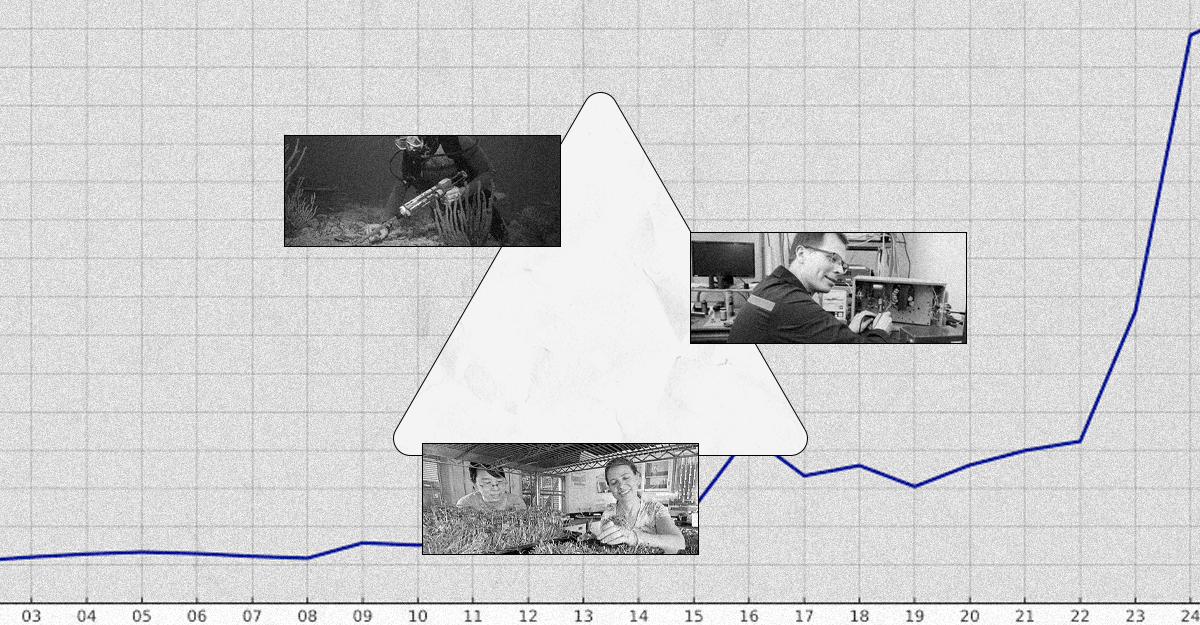
Creating A Vision and Setting Course for the Science and Technology Ecosystem of 2050
The science and technology (S&T) ecosystem is a complex network that enables innovation, scientific research, and technology development. The researchers, technologists, investors, educators, policy makers, and businesses that make up this ecosystem have looked different and evolved over centuries. Now, we find ourselves at an inflection point. We are experiencing long-standing crises such as climate change, inequities in healthcare, and education; there are now new ones, including the defunding of federal and private sector efforts to foster diverse, inclusive, and accessible communities, learning, and work environments.
As a Senior Fellow at the Federation of American Scientists (FAS), I am focused on setting a vision for the future of the S&T ecosystem. This is not about making predictions; rather, it is, instead, about articulating and moving toward our collective preferred future. It includes being clear about how discoveries from the S&T ecosystem can be quickly and equitably distributed, and why the ecosystem matters.
The future I’m focused on isn’t next year, or the next presidential election – or even the one after that; many others are already having those discussions. I have my sights set on the year 2050, a future so far out that none of us can predict or forecast its details with much confidence.
This project presents an opportunity to bring together stakeholders across different backgrounds to work towards a common future state of the S&T ecosystem.
To better understand what might drive the way we live, learn, and work in 2050, I’m asking the community to share their expertise and thoughts about how key factors like research and development infrastructure and automation will shape the trajectory of the ecosystem. Specifically, we are looking at the role of automation, including robotics, computing, and artificial intelligence, in shaping how we live, learn, and work. We are examining both the transformative potential and the ethical, social, and economic implications of increasingly automated systems. We are also looking at the future of research and development infrastructure, which includes the physical and digital systems that support innovation: state-of-the-art facilities, specialized equipment, a skilled workforce, and data that enables discovery and collaboration.
To date, we’ve talked to dozens of experts in workforce development, national security, R&D facilities, forecasting, AI policy, automation, climate policy, and S&T policy to better understand what their hopes are, and what it might take to realize our preferred future. They have shared perspectives on what excites and worries them, trends they are watching, and thoughts on why science and technology matter to the U.S. My work is just beginning, and I want your help.
So, I invite you to share your vision for science and technology in 2050 through our survey.
The information shared will be used to develop a report with answers to questions like:
- What’s the closest we can get to a shared “north star” to guide the S&T ecosystem?
- What are the best mechanisms to unite S&T ecosystem stakeholders towards that “north star”?
- What is a potential roadmap for the policy, education, and workforce strategies that will move us forward together?
We know that the S&T epicenter moves around the world as empires, dynasties, and governments rise and fall. The United States has enjoyed the privilege of being the engine of this global ecosystem, fueled by public and private investments and directed by aspirational visions to address our nation’s pressing issues. As a nation, we’ve always challenged ourselves to aspire to greater heights. We must re-commit to this ambition in the face of global competition with clarity, confidence, and speed.
As we stand at this inflection point, it is imperative we ask ourselves – as scientists, and as a nation – what is the purpose of the S&T ecosystem today? Who, or what, should benefit from the risks, capital, and effort poured into this work? Whether you are deeply steeped in the science and technology community, or a concerned citizen who recognizes how your life can be improved by ongoing innovation, please share your thoughts by August 31.
In addition to the survey, we’ll be exploring these questions with subject matter experts, and there will be other ways to engage – to learn more, reach out to me at QBrown@fas.org.
It’s become acutely clear to me that the ecosystem we live in will be shaped by those who speak up, whether it be few or many, and I welcome you to make your voice heard.
When the U.S. government funds the establishment of a platform for testing hundreds of behavioral interventions on a large diverse population, we will start to better understand the interventions that will have an efficient and lasting impact on health behavior.
Integrating AI tools into healthcare has an immense amount of potential to improve patient outcomes, streamline clinical workflows, and reduce errors and bias.
Whole Health is a proven, evidence-based framework that integrates medical care, behavioral health, public health, and community support so that people can live healthier, longer, and more meaningful lives.
Innovation Ecosystem Job Board connects scientists, engineers, technologists, and skilled federal workers and contractors who have recently departed government service with the emerging innovation ecosystems across America.